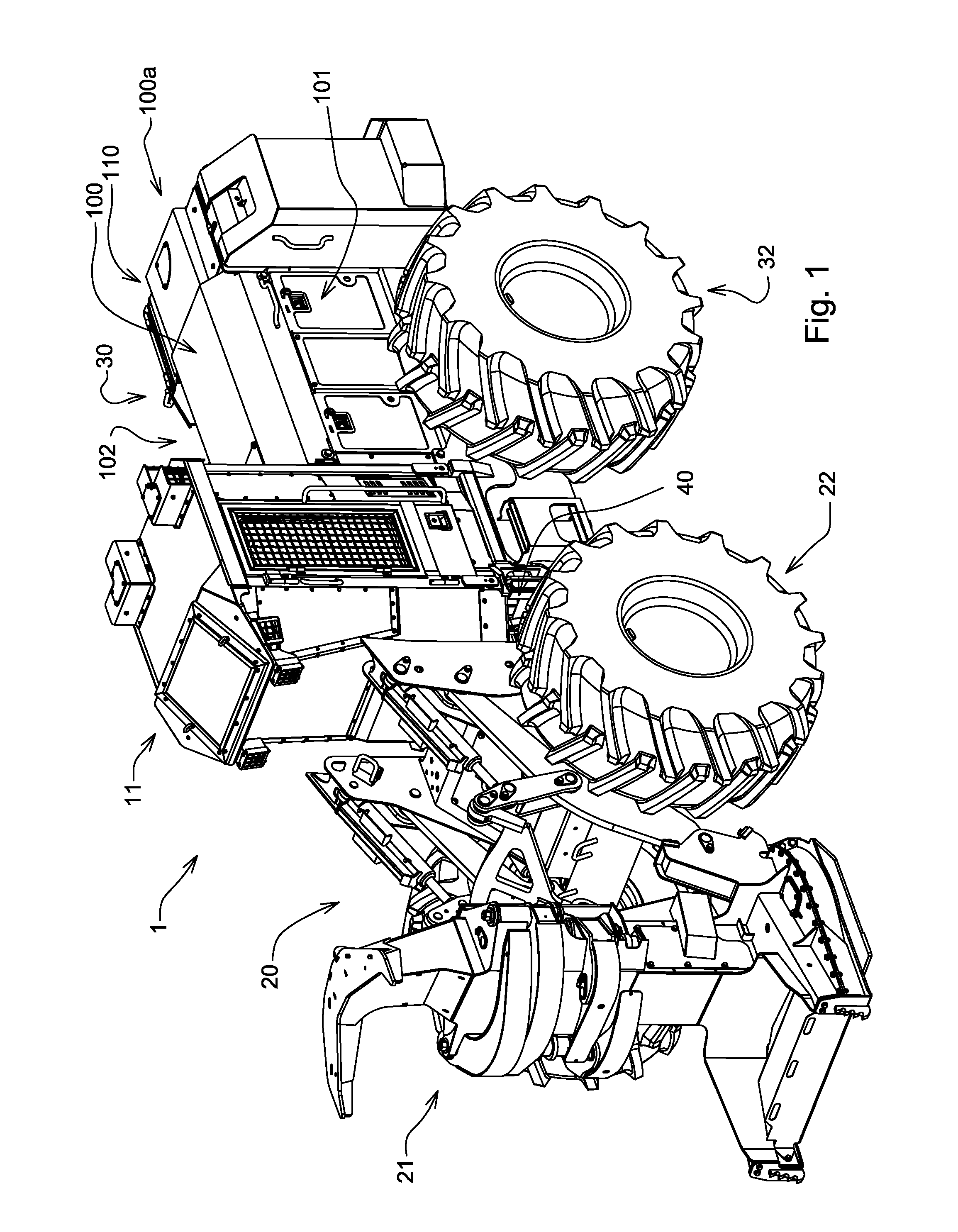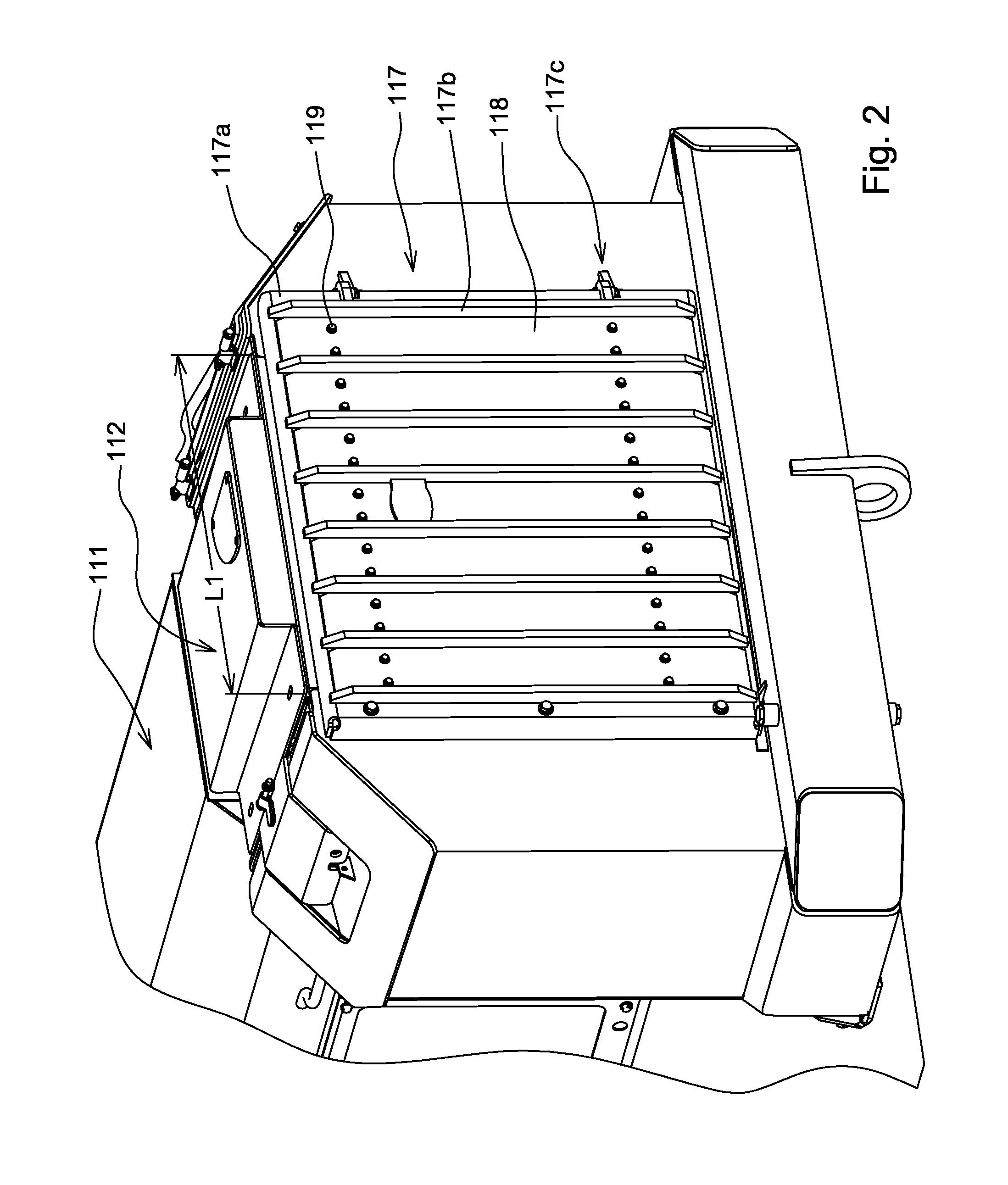Integrated Air Intake System
a technology of air intake system and integrated air, which is applied in the direction of roofs, combustion air/fuel air treatment, machines/engines, etc., can solve the problems of obstructing visibility of work vehicles by work vehicles, inconvenience, and only intensifying disadvantages
- Summary
- Abstract
- Description
- Claims
- Application Information
AI Technical Summary
Benefits of technology
Problems solved by technology
Method used
Image
Examples
Embodiment Construction
[0019]FIG. 1 illustrates an exemplary embodiment of a work vehicle in which the invention is used. The particular work vehicle illustrated in FIG. 1 is a wheeled feller buncher 1; an articulated vehicle having a front body portion 20 connected to a rear body portion 30 via pivots 40, the wheeled feller buncher 1 being steered by pivoting of the front body portion 20 relative to the rear body portion 30 in a manner well known in the art. The rear body portion 30 includes an engine enclosure 100 having a first sidewall 101, a second sidewall 102 and a hood 100a with an integrated air intake duct 110 and a supporting structure 113 (FIG. 5).
[0020]FIGS. 2 and 3 illustrate that, in this exemplary embodiment, a grille screen 117 forms a portion of the engine enclosure 100. As shown in FIGS. 5 and 6, in this particular embodiment, the grille screen 117 includes a grille bar support 117a, a plurality of grille bars 117b and a screen 118 with a multiplicity of holes, each having an approximat...
PUM
 Login to View More
Login to View More Abstract
Description
Claims
Application Information
 Login to View More
Login to View More - R&D
- Intellectual Property
- Life Sciences
- Materials
- Tech Scout
- Unparalleled Data Quality
- Higher Quality Content
- 60% Fewer Hallucinations
Browse by: Latest US Patents, China's latest patents, Technical Efficacy Thesaurus, Application Domain, Technology Topic, Popular Technical Reports.
© 2025 PatSnap. All rights reserved.Legal|Privacy policy|Modern Slavery Act Transparency Statement|Sitemap|About US| Contact US: help@patsnap.com



